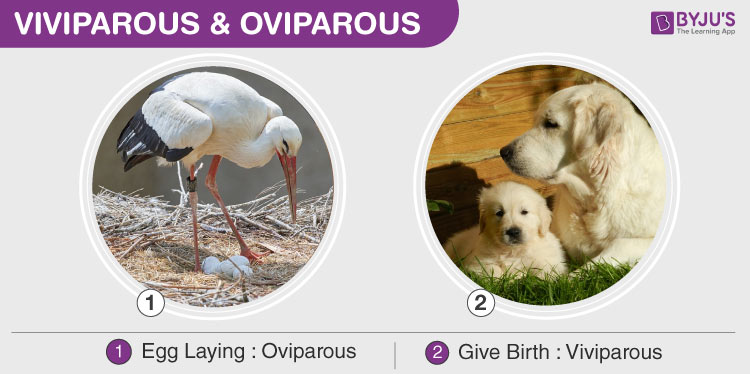Which List of Details Describes the Viviparous Mode of Reproduction
Humans dogs and cats are viviparous animals. Mammals like cow horse dog cat and human beings are examples of viviparous animals.

Phylogenetic Relationships Between The Oviparous And Viviparous Strains Download Scientific Diagram
18 taskmasters Internal fertilization development of an embryo within the female body and the developing embryo deriving nourishment from its mother is the one list of details that describes the viviparous mode of reproduction.

. There are three different modes of reproduction. Viviparity is a highly successful reproductive mode and is the dominant form of reproduction found in approximately 58 of elasmobranchs Compagno 1990. Viviparous animals are found throughout the animal kingdom.
The young ones are born live. Viviparous is an adjective that is used to describe the animals being born from a mother. The correct option among all the options that are given in the question is the first option or option A.
Viviparous animals give birth to living young that have been nourished in close contact with their mothers bodies. This article explores the most important and interesting features of the two reproductive methods and additionally discusses the differences between those. The correct option among all the options that are given in the question is the first option or option A.
Birds snakes frogs and butterflies are examples of oviparous animals. Ovo - Viviparity - internal fertilization development of an embryo within the female body and the developing embryo deriving nourishment from its mother. Dulvy and Reynolds 1997.
No eggs are laid. Newly hatched birds and young ones of mammals look similar to their parents. Viviparous and oviparous are two of those modes.
Humans reproduce via internal fertilization. The main characteristic of viviparous species is that embryo development occurs. External fertilization and the development of offspring outside the mothers body.
Animals that lay eggs which hatch into offspring are called oviparous animals. Internal fertilization development of an embryo within the female body and the developing embryo deriving nourishment from its mother B. Viviparous animals are found throughout the animal kingdom.
These are viviparity oviparity and ovoviparity. As in all higher mammals the egg implants in the uterine wall while it develops. The uterine wall develops a structure known.
Which list of details describes the viviparous mode of reproduction. This is opposed to oviparity which is a reproductive mode in which females lay developing eggs that complete their development and hatch externally from the mother. The young of some ovoviviparous amphibians such as limnonectes.
There are three traditional types of reproduction although French biologist Thierry Lodé breaks it down into five modes 1. The eggs hatch inside the mothers body and are nourished by yolk and other fluids until the animal is born. - Ovoparity - internal fertilization but development of offspring outside the mothers body in eggs.
Which list of details describes the viviparous mode of reproduction. Humans like most mammals are viviparous animals. The eggs are laid outside the mothers body with minimal embryonic development occurring within the mother.
This last mode is when the embryos are inside an egg but remain in the mother until they are ready to hatch. Among animals viviparity is development of the embryo inside the body of the parent. An aphid giving viviparous birth an unusual mode of reproduction among insects.
Internal fertilization development of an embryo within the female body and the developing embryo deriving nourishment from its mother is the one list of details that describes the viviparous mode of reproduction.

An Overview On Viviparous Oviparous Development Of Embryo

Class 12 Biology Ch1 Difference Between Oviparous Viviparous Animals Reproduction In Organisms Youtube

Pdf Oviparity Or Viviparity That Is The Question

Viviparous And Oviparous Animals Differences And Explanation
No comments for "Which List of Details Describes the Viviparous Mode of Reproduction"
Post a Comment